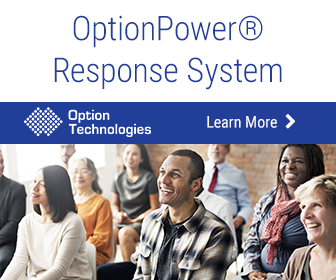Are you sure your audience questions are really free of bias? See, that’s a trick question right there, because it’s phrased in a leading way. Words like “really” and phrases like “are you sure” nudge people in a certain direction, influencing their answers.
Presenters who interact with audiences must be careful not to pepper their questions with leading words. It poisons the process and interferes with receiving honest feedback. Let’s take a closer look at how to ask the right questions and keep your presentations free of bias.
So Simple, it’s Complicated
Here’s the first thing you’ll notice about avoiding bias: It’s surprisingly difficult. It seems like it should be easy to ask clear, concise questions, but it often takes a lot of editing and rewording.
For example, look at the difference between these two questions:
- Should responsible pet owners vaccinate pets against deadly diseases?
- Should pet owners get vaccinations for their pets?
The first question seems rather harmless at first, but take a closer look. It uses adjectives like “responsible” and “deadly” to create concern within someone’s mind, possibly influencing their answer. The second question is more straightforward.
Types of Biased Questions
It takes a little practice to recognize the various types of biased questions. Here’s a look at some common examples.
Loaded questions. These questions assume a key issue, essentially forcing someone into answering a certain way.
- Example: “Where do you plan to enroll your child in daycare?” This assumes the person plans to use daycare. Perhaps they plan to be a stay-at-home parent instead.
Leading questions. This involves questions that only lead to one “correct” answer. They often hint at dangers or include negative connotations.
- Example: “Could you ever completely trust Jane Smith to be an ethical mayor of this town?” Political ads sometimes use questions like these to cast doubt and lead to certain conclusions.
Double-barreled questions. These really ask more than one thing.
- Example: “How likely or unlikely are you to pursue mainstream medicine or alternative treatments?” Faced with multiple questions, most people will probably give vague answers or focus on one aspect of the question.
Closed questions. These force yes-or-no responses, even if it’s the opposite of what the person really means.
- Example: “Do you ever snack during the day?” Seeing the word “ever,” most people will simply say yes, even if they usually don’t eat snacks. An open-ended question would be much more effective here.
Unclear questions. These use lingo and unfamiliar terms.
- Example: “Do you think the RICO rule should apply to gangland felons?” The average person would need definitions of “RICO rule” and “gangland felons” to understand the question.
Banishing Bias
Now that you’ll be on the lookout for confusing and biased questions, let’s examine some methods that further prevent bias from creeping into your presentations.
Stick to screener yes/no questions. In general, use open-ended questions that are phrased as directly and concisely as possible in your audience presentations. If you must include certain closed yes-or-no questions, ask them in an information-gathering form, after the basic demographic data.
Give a warm, informative welcome. Invite a trusted introductory speaker to explain the process and reassure the audience that you want 100% honest responses.
Use an audience response system. Power your presentation with technology. Use an electronic response system that gathers feedback in an organized, unbiased way. These systems tend to increase audience engagement, provide accurate data, and build trust within groups that use them.
Provide a place for feedback. Offer a way to share their opinions about the experience afterward. This is another helpful way to eliminate bias from your presentations - an audience member might point out something confusing or biased that you never even noticed before.
Option Technologies uses audience response systems to eliminate bias and foster audience feedback. Request a demo today and see it in action.


